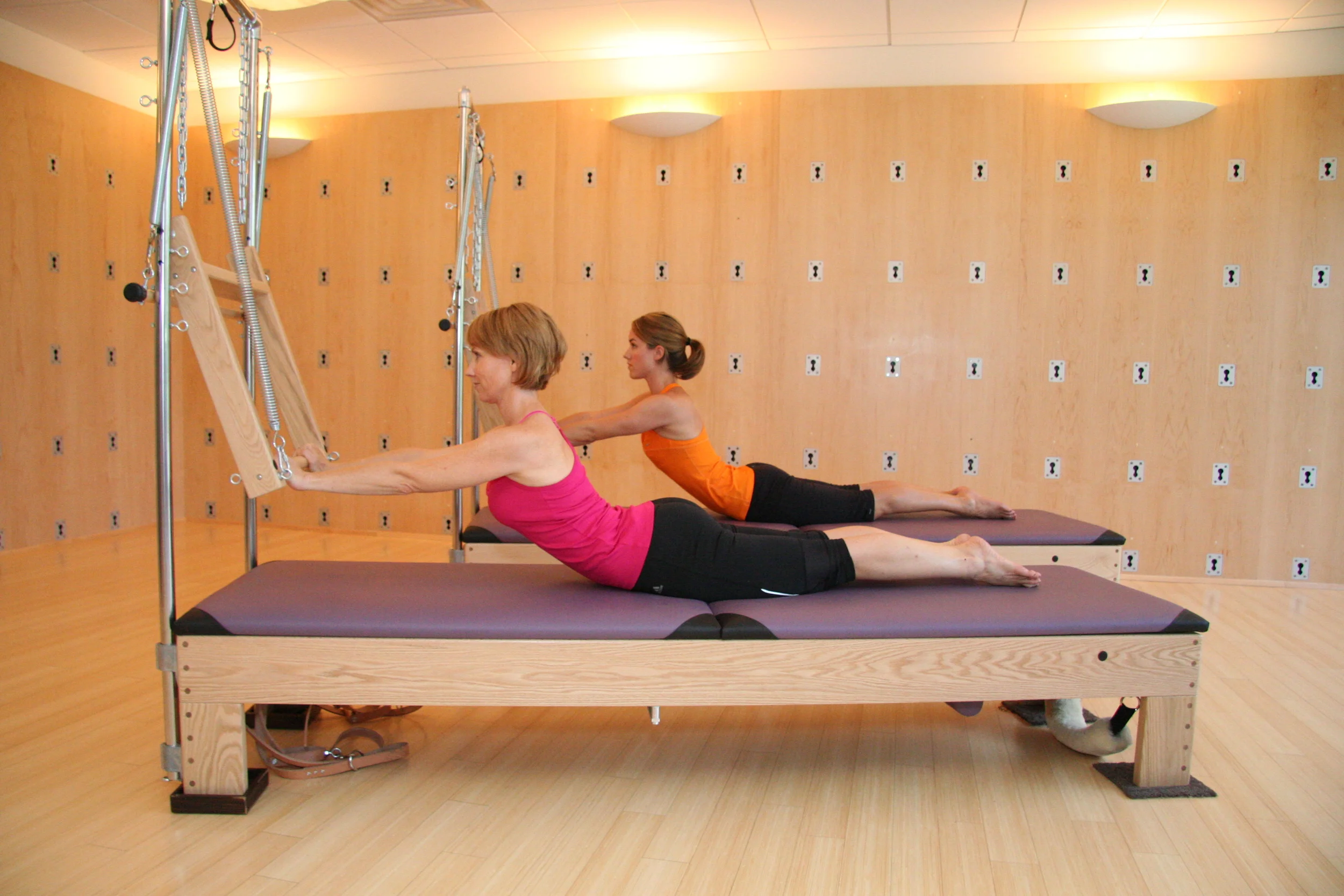In this video, Shoshana reviews Frog and Leg Circles. This is a leg strengthening exercise that challenges the stability of the pelvis. Springs: 2
How Pilates Can Help with Lower Back Pain
by Shoshana Goldstein
If you've ever groaned, "Oh, my aching back!" you are not alone. According to the National Institute of Health, about 80% of adults experience lower back pain at sometime during their life. Back pain can range from a dull, constant ache to a sudden, sharp pain. Acute back pain comes on suddenly and usually lasts from a few days to a few weeks. Back pain is called chronic if it lasts for more than three months.
Lower back pain can be associated with many issues. These include spinal stenosis, bulging discs, herniated discs, degenerative discs, spondylosis and spondyloysthesis.
In Pilates the focus is to de-compress the lumbar spine by working to create a balance of strength between the lower, deep abdominals and low back muscles. The equipment we use provides support to the spine and provides tactile feedback.
The Pilates session focuses on safe movements. We provide modifications as needed and/or omit exercises. Each repetition of an exercise must be pain free.
Seated exercises should be omitted at first as they put a much heavier load on the lower back compared to lying down. Even though you might not have pain while sitting, you might notice pain while exercising.
When you position your legs in an uplifted or up-stretched position, the weight of the legs pulls on your pelvis and compresses your lower back by going into an arched position (anterior tilt). Therefore, it is recommended that in an exercise like The Hundred the legs should be kept slightly bent, high toward the ceiling or bent at the knee with legs resting on the mat.
Since stretching the hamstrings pulls on the pelvis and compresses the lower back, all exercises in the Pilates repertoire that includes a hamstring component need to be adjusted. For example, in the mat exercise Single Leg Stretch keep a slight bend in the knee of the circling leg. Likewise while sitting as in Spine Stretch Forward, sit up on a bolster or small barrel.
Exercises that include a lift of the hips over the shoulders can also compress the lower back. Instead in rolling exercises like Rolling - Like a Ball just balance. The Half -Roll Down is a good alternative to the Roll Up. (See video)
Spinal rotation can also be compressive. Sit up on a bolster for mat exercises like The Saw and Spine Twist. Make your rotations smaller or eliminate rotation exercises all together. Always listen to your body. Remember that NO PAIN is of utmost importance.
If you are working on the reformer be sure to follow these modifications. Decrease the spring load as appropriate: For example, 4 springs would go to 3 springs, 3 springs would go to 2 springs. However, do not go lighter than 2 springs. As you go lighter, you need to have more control. When you are in pain, you have little control. When transitioning, roll onto one side, using your hands and abdominals to help sit up or to lie back down.
Pilates can be a great for you if the movements are done safely. It is important to make wise choices of what to do and what not to do. Create good communication with your instructor. If you experience any pain, you must inform your instructor immediately. As Shari Berkowitz of The Vertical Workshop says, “The rule is No Pain. It’s not the old “No pain, no gain.” “It is just No Pain.”

